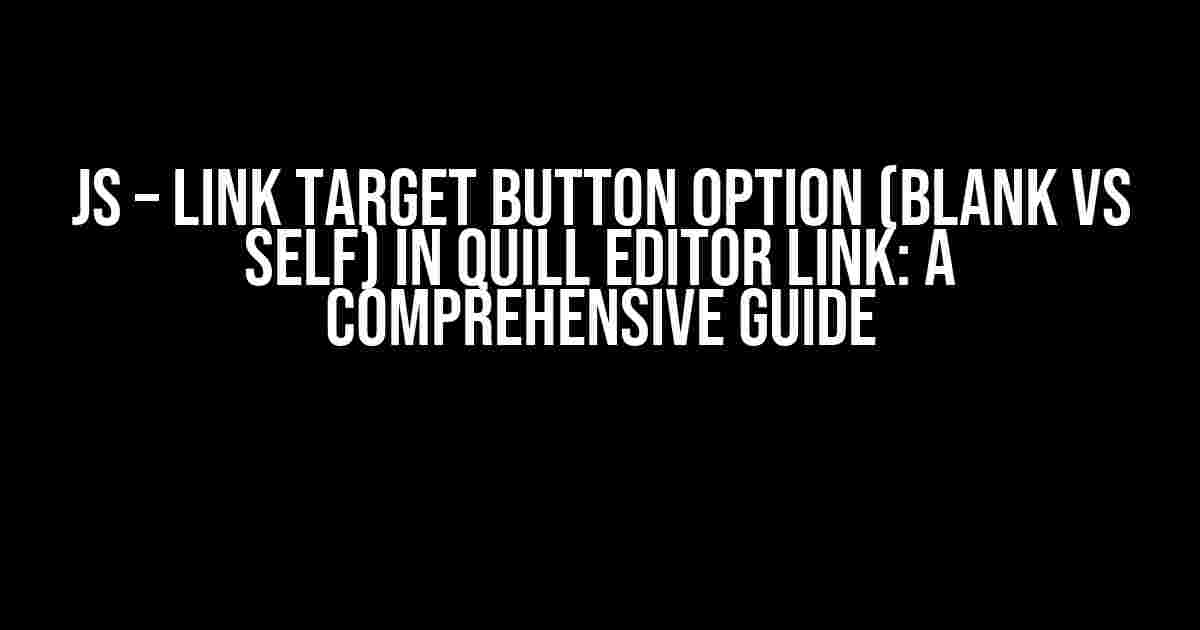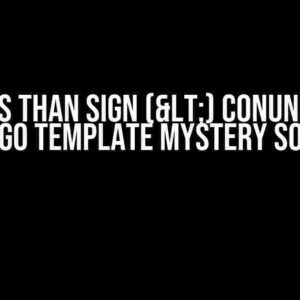Are you tired of struggling with link target button options in Quill Editor? Do you want to learn the difference between “blank” and “self” and how to use them effectively? Look no further! In this article, we’ll dive deep into the world of Quill Editor and explore the link target button option, providing you with a comprehensive guide on how to use it like a pro.
What is Quill Editor?
Quill Editor is a popular, open-source WYSIWYG editor that allows users to create rich text content. It’s widely used in web applications, blog platforms, and content management systems. Quill Editor provides an intuitive interface for users to format text, insert images, and create links, making it an essential tool for content creators.
What is the Link Target Button Option?
The link target button option is a feature in Quill Editor that allows users to specify how a link should behave when clicked. This option is essential, as it determines whether the linked page will open in the same tab or a new one. In this section, we’ll explore the two main options: “blank” and “self.”
Blank vs Self: What’s the Difference?
When creating a link in Quill Editor, you’ll notice two options for the target button: “blank” and “self”. But what do they mean, and when should you use each?
- Blank: The “blank” option tells the browser to open the linked page in a new tab. This is useful when you want to allow users to keep the original page open while exploring the linked content. For example, if you’re linking to an external resource or a downloadable file, you might want to use the “blank” option.
- Self: The “self” option, on the other hand, tells the browser to open the linked page in the same tab. This is useful when you want to keep the user within your application or website. For example, if you’re linking to an internal page or a help section, you might want to use the “self” option.
How to Use the Link Target Button Option in Quill Editor
Now that you understand the difference between “blank” and “self”, let’s see how to use the link target button option in Quill Editor.
To access the link target button option, follow these steps:
- Select the text you want to convert into a link.
- Click the “Link” button in the Quill Editor toolbar or use the keyboard shortcut Ctrl + K (Windows) or Command + K (Mac).
- In the “Link” dialog box, enter the URL you want to link to.
- Click the “Target” dropdown menu.
- Select either “blank” or “self” depending on your needs.
- Click “Insert” to create the link.
That’s it! Your link is now created with the specified target option.
Example Code
Visit Example.com
In the above example, the link will open in a new tab when clicked, thanks to the `target=”_blank”` attribute.
Best Practices for Using the Link Target Button Option
While the link target button option is a powerful feature, it’s essential to use it thoughtfully to provide the best user experience. Here are some best practices to keep in mind:
- Use “blank” for external links: When linking to external resources, use the “blank” option to allow users to keep your application or website open.
- Use “self” for internal links: When linking to internal pages, use the “self” option to keep the user within your application or website.
- Be consistent: Establish a consistent linking strategy throughout your application or website to avoid confusing users.
- Consider accessibility: When using the “blank” option, ensure that the linked page is accessible and usable for users with disabilities.
Common Mistakes to Avoid
When using the link target button option, there are some common mistakes to avoid:
- Forcing the user’s browser to open multiple tabs: Avoid using the “blank” option for multiple links on the same page, as this can lead to a cluttered browsing experience.
- Not considering mobile devices: When using the “blank” option, ensure that the linked page is optimized for mobile devices to provide a seamless user experience.
- Not testing links: Always test your links to ensure they work correctly and open as intended.
Conclusion
In conclusion, the link target button option in Quill Editor is a powerful feature that allows you to control how links behave when clicked. By understanding the difference between “blank” and “self” and following best practices, you can create a better user experience and improve the overall usability of your application or website. Remember to avoid common mistakes and always test your links to ensure they work correctly.
| Option | Description |
|---|---|
| Blank | Opens the linked page in a new tab. |
| Self | Opens the linked page in the same tab. |
We hope this comprehensive guide has helped you understand the link target button option in Quill Editor. If you have any questions or need further assistance, feel free to ask in the comments below!
Frequently Asked Question
Get ready to master the Quill Editor link and uncover the secrets of the link target button option!
What is the link target button option in Quill Editor?
The link target button option in Quill Editor allows you to set the target attribute for the link. This attribute specifies where the linked document should be opened. You have two options: _blank and _self. The choice you make will determine how the linked page is opened!
What does the _blank target option do?
When you choose the _blank target option, the linked page will open in a new tab or window. This means that the user will be able to keep the original tab open while accessing the linked content. It’s perfect for situations where you want to provide additional information without disrupting the user’s workflow!
What does the _self target option do?
By selecting the _self target option, the linked page will open in the same tab or window. This means that the user will be directed away from the original content and will need to use the back button to return. Use this option when you want the user to focus on the linked content!
When should I use the _blank target option?
Use the _blank target option when you want to provide supplementary information, cite sources, or link to external resources that aren’t essential to the main content. This way, the user can access the additional information without leaving the original page!
Can I set the link target option globally in Quill Editor?
Unfortunately, Quill Editor doesn’t offer a global setting for the link target option. You’ll need to set it individually for each link you create. However, you can use a template or a custom solution to streamline the process and save time!


